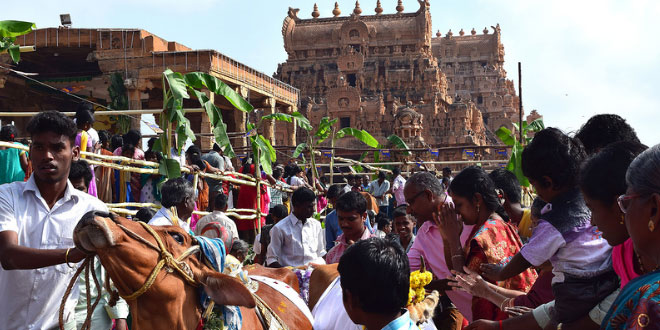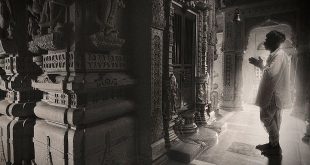Mattu Pongal: This third day is meant for the cattle (‘mattu’) – the giver of milk and puller of the plough. The farmer’s ‘dumb friends’ are given a good bath, their horns are polished, painted and covered with metal caps, and garlands are put around their necks.
The Pongal that has been offered to the gods is then given to the cattle to eat. They are then taken out to the racing tracks for cattle race and bullfight – an event full of festivity, fun, frolic and revelry.
What is Mattu Pongal?
The festivities of Pongal have started when the entire family comes together to thank go for providing us with food. While it is the first day, it will be followed by Mattu Pongal. While you are busy prepping for the festival, we present to you 5 reasons why Mattu Pongal is celebrated.
- Origin of Mattu Pongal: Legend has it that one day Lord Shiva asked his bull Nandi to visit Earth and tell humans to eat once a month and take oil massage and bath every day. Instead of saying this, he told the mortals to take bath with oil once a month and eat daily. This enraged Lord Shiva and he asked the bull to stay on Earth only and plough fields to help people grow more food.
- How is the day celebrated? On Mattu Pongal, cattle are washed and their horns are colored. Their horns are covered in metallic caps too and their necks are beautified with bells, beads, garlands, sheaves of corn etc. On this day people carry out aartis after which they touch the feet and head of the decorated bull. After that, the bull is offered the prasad.
- When is Mattu Pongal celebrated? It is the third day of the Pongal festival and the celebration mark the beginning of that time of the year when fresh harvesting of rice starts.
- How is the festival celebrated? During this festival, people wash their cattle, cows, bulls and other farm animals. They also make rangolis with flour or colored chalk powders in or outside their houses.
- Offering that is made during Mattu Pongal: Pongal basically means rice. So it is placed on the rangoli aka kolam which is created by the observers of the festival. Other than rice, other offerings are also given to cattle such as sugarcane, turmeric, ginger etc.
 Kids Portal For Parents India Kids Network
Kids Portal For Parents India Kids Network







